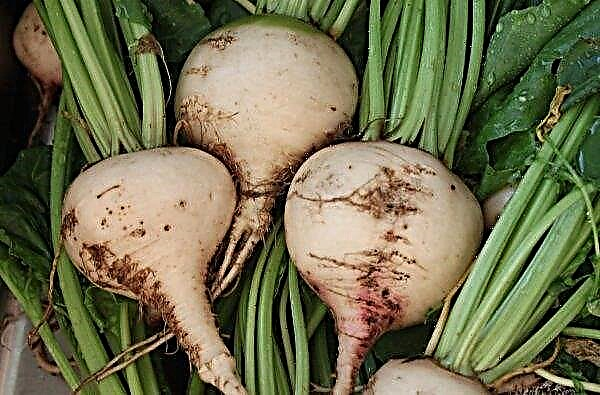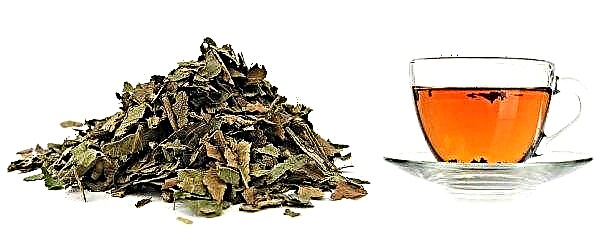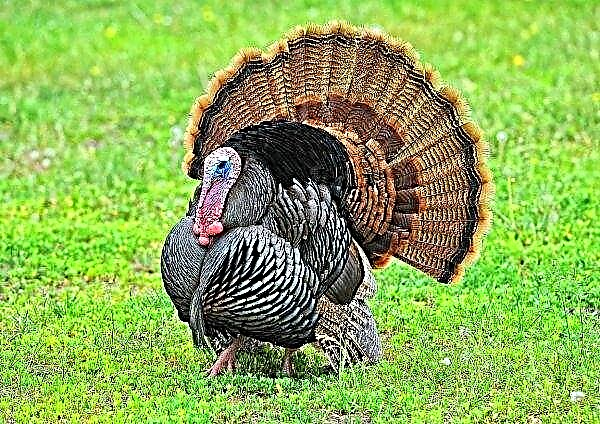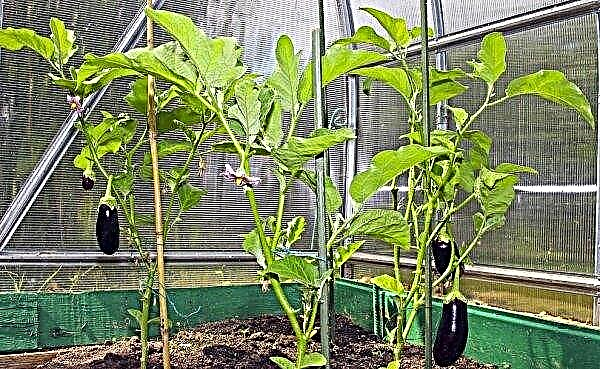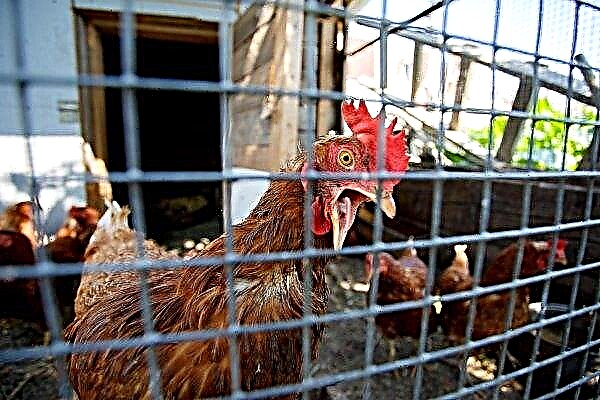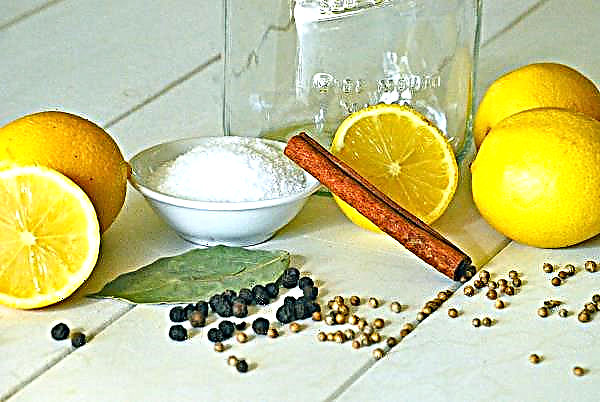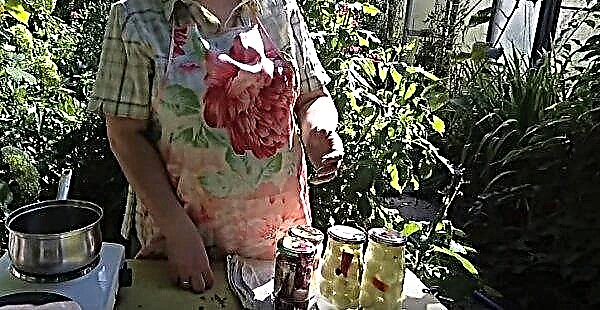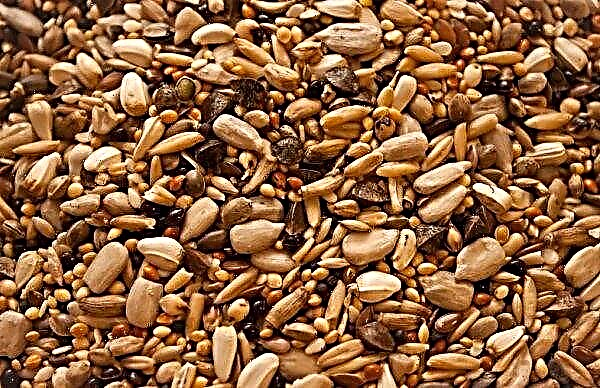With the advent of spring, skilled gardeners try to get the first crop of cucumbers as quickly as possible, for which early ripe varieties are cultivated. In this article, we will consider the characteristics of an early ripe variety of Palchik cucumbers, as well as the rules for planting and caring for this plant.
Selection History and Variety Description
 The Palchik cucumber variety was bred by Russian breeders and entered in the Federal Register in 2001. Selection work was carried out at the Volgograd experimental station named after academician Vavilov. The author of the variety is V. A. Shefatov.
The Palchik cucumber variety was bred by Russian breeders and entered in the Federal Register in 2001. Selection work was carried out at the Volgograd experimental station named after academician Vavilov. The author of the variety is V. A. Shefatov.
The plant is early ripe, the variety is suitable for cultivation in various regions. In the northern regions, greenhouse cultivation is recommended. The finger differs from other cucumbers in a long fruiting period, reaching up to 60 days under favorable conditions. Due to its early ripeness, cucumbers of this variety manage to give back the crop before the mass appearance of such fungal diseases as powdery mildew in the gardens. The bushes are covered with large dark green leaves, the fruits have a bright green color, and with age the skin color darkens. Originators of the variety declare a yield of 6.8 kg / m².
Finger flowers are pollinated by insects. The taste of cucumbers of this variety genetically has no bitterness. The maximum weight of adult fruits reaches 110–130 g, and the length is 11–12 cm. The first fruits begin to ripen 42–46 days after the appearance of sprouts on the soil surface.
Did you know? The temperature on the surface of the cucumber and the internal temperature of the vegetable may differ from each other. Sometimes the temperature difference reaches 20 ° C.
Advantages and disadvantages
For almost two decades, the Palchik cucumber variety has gained popularity among vegetable growers. Like any plant, this variety has both its advantages and some disadvantages.
- Grade advantages:
- high productivity;
- the plant has strong stems and good leafy bush;
- forms many lashes;
- early bearing
- 80% of the flowers are female;
- large leaves that can protect the plant from heat;
- smooth peel of fruits;
- universality of the use of cucumbers.
- Cons of the variety:
- increased education of stepsons, which speeds up the procedure for forming a bush;
- the need for pollination of flowers by insects.
Optimal landing times
Cucumber comes from a tropical climate, although it has adapted to more moderate temperatures. As air temperature drops, plantings are at serious risk of being destroyed in the event of frost. When the air temperature drops below + 15 ° C, the culture freezes in growth and begins to hurt.
Therefore, sowing seeds in the soil should be carried out:
- in northern areas - in late May or early June;
- in the middle lane - in the first decade of May;
- on South - April 20–25.
 It is worth noting that autumn and winter are favorable for the formation of female flowers on cucumbers. Therefore, in winter, culture can also be successfully grown, but only in heated and artificially lit greenhouses.
It is worth noting that autumn and winter are favorable for the formation of female flowers on cucumbers. Therefore, in winter, culture can also be successfully grown, but only in heated and artificially lit greenhouses.Planting and growing cucumbers
The culture can be sown as a direct sowing of seeds directly into the soil, and planting seedlings. Sowing can be carried out with both dry and sprouted seeds - they are germinated if it is necessary to reduce the time of germination. A preliminary cultivation of seedlings is required when they want to get an early crop of cucumbers.
Before planting cucumbers, it is important to highlight some features of the Palchik variety:
- The stems of the cucumber can climb to the support, and the branches can reach a length of 1 to 3 m.
- Since this is a thermophilic plant, it develops best in direct sunlight for at least several hours a day. Along with this, it is necessary to water the plant so that the roots never remain dry.
Seedling method
Before you start growing cucumber seedlings, you must correctly determine the time of sowing seeds. This depends on when steady heat usually occurs in a given area and it becomes possible to plant plants in a permanent place. For example, if seedlings are planned to be planted on May 1, then the seeds need to be sown 35 days before (March 25). Approximately 3-5 days are spent on seed germination (the timing depends on how warm the room is), and the next 30 days are devoted to the development of the plant itself.
How to properly grow cucumber seedlings:Important! Cucumber seedlings should not outgrow, as overgrown plants poorly take root in a new place. The maximum term for growing cucumber seedlings in pots is 30 days from the moment seedlings emerge above the soil.
- Seedlings love loose, fertile soil. You can mix the soil mixture yourself, and it is best to do this in the fall, in reserve. A good soil mixture is obtained from 2 parts of chernozem, 1 part of sand, 1 part of deciduous land and 1 part of humus. If possible, you can add some wood ash, previously sifted through a sieve.
- Tanks with a volume of at least 0.5 liters (beer glasses, flower pots, peat glasses of large volume) are suitable as containers for growing seedlings. Peat cups are optimal - plants can be planted in the ground with them, and later on the roots will easily grow through the peat walls soaked in the ground. From the other planting containers, the seedlings during transplantation should be taken out very carefully, turning the container upside down and holding the stem with your fingers, remove the container from the roots with gentle movements, turning it clockwise and up.
- Before sowing, fill the pots with soil so that a small gap remains between the soil and the side of the pot. The free space will allow watering the plants, not being afraid that water will overflow over the edge of the pot.
- Sow 2 seeds in each pot, placing them at a distance of 2 cm from each other. The double seeding rate protects against poor seed germination. In the future, one of the sprouts will be removed, and for further growth a stronger plant remains. The depth of seed placement in the soil is 1.5–2 cm.

- Pour the soil in the pots a little, and then cover each pot with a plastic bag and put it in a warm place until the seeds germinate.
- After the cucumbers have ascended, rearrange the seating containers closer to the light, on the windowsill or seedling table. In the first half of the growing period, plants may lack natural light, and they will need artificial lighting with a fluorescent lamp or phytolamp. Artificial lighting should be turned on in the morning and in the evening, from 8:00 to 10:00 and from 18:00 to 20:00.
- The temperature in the room where the seedlings are grown should not fall below + 18 ° C. It is also undesirable to set the temperature above + 25 ° C - this will cause rapid stem growth to the detriment of the root system. The optimum growing temperature is +20 ... + 22 ° C.
- If the room where the seedlings are grown is warm, you need to water it daily. Watering should be moderate. It is very good to take melted snow or rainwater for irrigation. If this is not possible, tap water, which has been left for several days, is suitable. If the room is cool, the frequency of watering should be reduced. The need for plants in moisture is determined by how dry the top layer of soil in the pot is. Overmoistening of the soil in combination with cold air will invariably cause the appearance of fungal diseases on seedlings.
Did you know? With the help of a cucumber, you can fix such a nuisance as bad breath. If you hold a slice of cucumber in your mouth for 30 seconds, this will allow the phytochemicals contained in the vegetable to kill the harmful bacteria that create a repulsive odor.
- As soon as the daytime air temperature on the street ceases to fall below + 20 ° C (approximately from mid-April), it is necessary to begin hardening of seedlings, for which it is necessary to take the containers outside and install in partial shade. Seedlings cannot be exposed to the sun, as the sun's rays will burn delicate leaves. The duration of the first hardening sessions does not exceed 30 minutes. The time spent on seedlings on the street should be gradually increased so that after 10 days cucumber seedlings can stand on the street during the whole daylight hours and be brought into the room only at night.
In a reckless way
Best cucumber seeds germinate at a temperature of +20 ... + 25 ° C. It is safer to plant cucumbers with seeds directly into the ground, as the root system of the seedlings can be damaged during transplantation.
Before planting, you need to pay attention to the soil. Culture grows best in fertile soil. The bed is well fertilized with organics and arranged drainage so that excess moisture does not stagnate in the roots of the plants. The optimum soil pH is 5.5-6.8.
How to plant cucumbers:
- Pre-select a place for growing cucumbers. The bed should be located in the sun or not be in the shade completely.
- Remove the top fertile layer of 15–20 cm from the surface of the bed and set it aside, then lay the drainage on the bottom of the resulting ditch. As drainage, you can use rough branches of trees or bushes, last year's stalks of sunflower or corn.
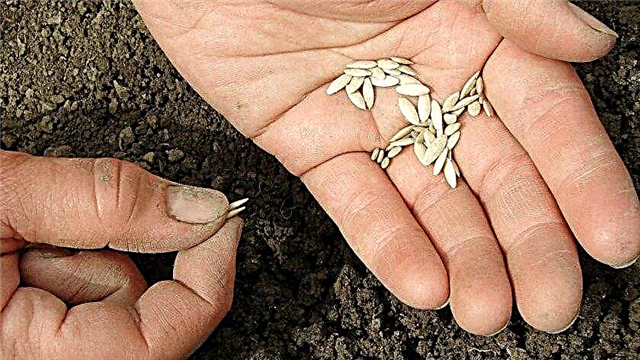
- Put organic fertilizers (cattle, poultry, or other domestic animals) on top of the drainage, water it well, and fill in the previously removed fertile soil as the top layer of the “sandwich”.
- Depending on the width of the plot, beds are made in 1 or 2 longitudinal planting furrows for sowing seeds. If you plan a trellis cultivation method, then on a bed 1 m wide you need to outline two planting furrows with a distance between them of 50 cm and a distance from the longitudinal edge of the garden to each of the furrows of 25 cm. Sow the seeds in both planting furrows with an interval of 20 cm each from a friend and staggered in relation to the opposite row. The depth of the seed furrow is 2-3 cm. On a bed 50 cm wide (with trellis cultivation), only 1 seed furrow should be made with a distance between the seeds in a row of 10 cm.
- Before landing, landing furrows should be well poured at the rate of 1 liter of water per 1 linear meter of furrow.
- Next, spread the seeds along the moist planting furrows with the above-mentioned interval between them and fill them with soil level with the surface of the bed.
Did you know? There are varieties of cucumbers, the fruit length of which reaches from 70 cm to 1 m. Such long cucumbers, for example, the Chinese Miracle variety, when grown on a trellis under the influence of gravity, grow fruits that look like thin long sticks, and when grown on a garden bed, »Their fruits twist into fancy spirals, like snakes.
- It is recommended to cover the garden bed with non-woven material (spunbond, agrofibre), doing this not “tightly,” but with some lap, based on the future growth of young plants. Due to this, moisture from the soil does not evaporate under the sun and young shoots are warm at night under cover. For watering plants, agrofibre is not removed, as it does not prevent moisture from entering the soil. Shelter is removed when young plants need to be weeded or tied up, after which the spanbond can be returned to its place or continued cultivation without the use of agrofibre.
- In the center of the garden, set a longitudinal vertical trellis. The optimal height of such a support is from 1.5 to 2 m. Young plants need to be weeded and tied to a trellis. In the future, the plant will cling to the support itself, but the gardener must keep this process under control and direct the cucumber lashes in the right direction, and if necessary, tie them up manually.
- When the cucumber lashes reach the height of the trellis, they must be thrown to the other side or pinch the growth point of the main stem. Due to such pinching, lateral stepsons begin to develop rapidly, on which an additional crop of gherkins is formed.
Cucumber care after planting
In the open ground, cucumbers require timely watering from the gardener, possibly shelter from the cold and the scorching rays of the sun, top dressing, cultivation and weeding. You also need to take care of protecting plants from pests and diseases.

Bush formation
So that the plant does not overgrown with side stepsons and instead of bearing fruit all the growth force does not go into the stems, the cucumber needs to form a bush.
Pruning and plant formation:
- Eliminate all side shoots (stepsons) to the 5th or 6th adult leaf. If there are flowers or ovaries, they are also removed. Leaves are left, including cotyledons, as they are very important for supporting the root system of the plant.
- After the 5th or 6th leaf, stepsons are not cut out and allowed to develop to these secondary branches, leaving only 2 fruits and 3 leaves on them or 1 fruit with 2 leaves. The fruit load depends on the strength of the bush and the growing season (spring, beginning or end of summer). If the bush is very strong, you can experiment and leave up to 3 fruits and 4 leaves on the side stepsons. Before this, it is necessary to check whether the plant has deformed fruits, which indicates an imbalance in nutrition.
- At a height of more than 2 m, pinch the main cucumber whip.
Fertilizing and watering
Irrigation is preferably done without spraying moisture on the surface of the leaves.
The most suitable methods are:
- irrigation into a longitudinal ditch under the root of plants;
- installation of drip irrigation systems on the garden bed.

If the bed is not adequately fed with organic fertilizers in preparation for planting seeds or planting seedlings, then during the growing season the plants need to be fed. The 1st feeding is carried out during flowering, about 1 month after the appearance of the first sprouts from the ground. In the 2nd feeding, cucumbers need closer to the end of the growing season, about 3 weeks after applying the first portion of fertilizer.
The most popular for cucumbers are nitrogen liquid root top dressing. For fertilizer, you can use a concentrated solution of bird droppings or a fermented solution of nettle.
How to make fertilizer from bird droppings:- Take a large container with a volume of 10 or 20 liters, install in a sunny place, protected from the wind.
- Fill the container with half dry or fresh bird droppings, and then fill with water almost to the top. From the liquid level to the side of the tank, 10-15 cm of free space should remain so that the solution does not leave the tank during fermentation. Mix the contents of the tank well with a wooden stick, after which the container is tightly closed with a lid - it is needed so that the liquid fertilizer does not lose nitrogen.
- In the sun, the solution in the tank starts to ferment quickly. It must be mixed well daily. With stirring, carbon dioxide leaves the fermentation solution. In sunny and hot weather, the fertilizer will be ready in 1 week, and if the temperature in the street is not very high, top dressing will “ripen” in 10-14 days.
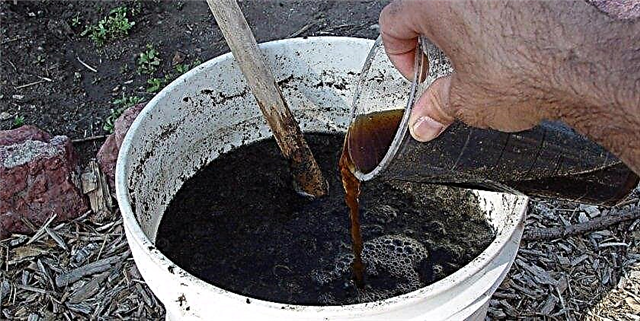
In the same way, fertilizer can be made from fermented nettle. To prepare herbal dressings, it is advisable to take a large garden barrel with a volume of 200 l and instead of bird droppings, put fresh nettles in the tank to half the tank. Further, the cooking process is identical to the process described above. Herbal concentrate is diluted in the same proportions as the solution concentrate from chicken droppings.
Important! Before use, the solution of fertilizer from bird droppings must be diluted with water (add a half-liter jar of concentrate to 10 liters of clean water). If you do not adhere to the recommendations for breeding top dressing, you can burn cucumber roots.
Soil care
The soil under the cucumbers must be loosened and weed from weeds with a frequency of 5-10 days. When weeding, do not bury the blade of the tool (chopper, plane cutter) deeper than 5 cm in the ground, since the roots are shallow and sharp metal can damage them.
You can reduce the need for watering by filling the soil between the aisles and the root zone with mulch (layer thickness - at least 15 cm). As a mulch, the ripened leaves of trees or straw, recently mowed grass, sawdust are suitable for cucumbers. During the summer, the mulch will have to be periodically updated, since the lower layer will decompose, enriching the soil with humus. Mulch will protect the soil layer from moisture evaporation, therefore, the need for watering will decrease. Also, the plant layer will not allow weed seeds to germinate on the bed.

Disease prevention
Cucumber reacts to yellowing leaves on diseases and environmental problems.
This reaction indicates the following problems:
- Cucumber is very sensitive to lighting. If the place where the bed is located is not lit by the sun for at least 4 hours of sun per day, the leaves may turn yellow. In this case, it is necessary to remove several leaves on the plant with a very sharp garden pruner or knife - this will help to ensure that the plant is better illuminated.
- The situation when the bushes are exposed to the sun all day is also not very good. In this case, you need to cover the bed with a spanbond or use a grid for shading. There are nets that provide shading of 30 or 50%.
- Attack spider mites or aphids. Aphids are easy to notice with the naked eye, it is located in large numbers on the underside of the leaf plate and may have a black, gray or whitish color of chitin. The presence of a spider mite on cucumbers can be determined by the web in the internodes of the plant. To combat them, insecticides or natural remedies are used, such as an aqueous solution of hot pepper or garlic with soap and detergent to stick the mixture to the leaves.
Did you know? Plates of cucumber placed on the eyelids will help reduce swelling under the eyes. This is facilitated by ascorbic and caffeic acids contained in the vegetable.
- The cause of the disease of cucumbers can be excessive watering. Cucumbers love water, but do not like swamping. Too wet soil stimulates the onset of disease. Water should be supplied to cucumbers in moderation, only early in the morning or no later than noon - in this case, the plants will have time to dry before evening. When watering, you need to try not to wet the cucumber leaves, but pour water directly to the roots. The fact is that in the heat, drops of water turning into water lenses under sunlight can cause sunburn on leaves, and in cool weather they create a breeding ground for the development of fungal diseases.
- In order to prevent the development of fungal diseases on cucumbers, plantings should be treated according to the sheet with preparations containing fungicides. The use of Bordeaux mixture for this purpose is very popular. It is also possible, for prevention purposes, to spray the cucumber bed with solutions and infusions prepared according to popular recipes, for example, whey or a mixture of 1 part cow's milk with 9 parts water. For the same purposes, you can use sour milk. The bacteria contained in dairy products successfully fight harmful fungi on cucumbers.

Harvesting and storage features
The fruits of cucumbers of the Palchik variety grow rapidly, so harvesting should be carried out often. It is very important to remove the grown fruits on time, since one that remains undetected and has outgrown the cucumber is able to delay the formation of the remaining fruits on the whip and significantly reduce the total yield of the bush for the season.
Collected cucumbers can be stored for 7–10 days without loss of quality in a cool, dry room, where the air temperature will not exceed + 10 ° C (in the basement, cellar). You can also keep cucumbers on the bottom shelf of the refrigerator and at the same time make sure that the vegetables are in plastic bags. This will not allow the cucumbers to lose elasticity and wither.
Collected cucumbers must be folded for storage in cardboard boxes equipped with special openings for airing vegetables.
Important! The collection of cucumber fruits is carried out in the morning, daily or every other day. It is recommended to cut the cucumbers with a pruner and in no case tear them from the stem - this will minimize injury to the mother plant.
So, in order to have early fresh cucumbers on the table, it is worth sowing cucumber seeds of the Palchik variety in spring. And with proper care of seedlings and adult bushes of this variety, the first crop can be harvested at the end of May.





